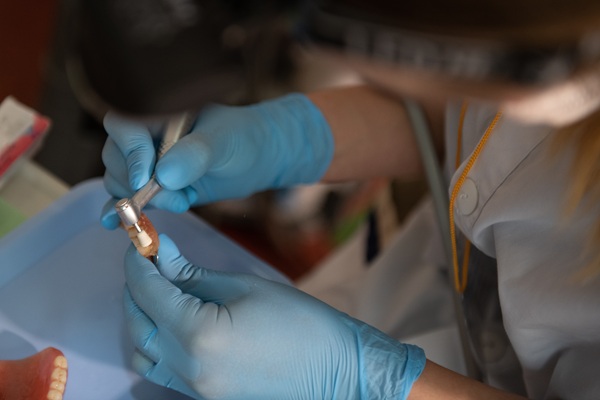 Dental bonding is a form of restorative treatment used to repair damaged enamel and fix cosmetic concerns such as gaps between teeth or uneven teeth. There are many benefits of dental bonding when used to repair damaged enamel, and it is safe for patients and does not harm the teeth in any way.
Dental bonding is a form of restorative treatment used to repair damaged enamel and fix cosmetic concerns such as gaps between teeth or uneven teeth. There are many benefits of dental bonding when used to repair damaged enamel, and it is safe for patients and does not harm the teeth in any way.
Dental bonding treatment to repair damaged enamel
There are certain times when dental bonding may be the best solution to repair damaged enamel. The following discussion highlights when a dentist may recommend dental bonding for damaged enamel and how this restorative treatment solution compares with alternative solutions such as dental veneers.
What is dental bonding?
Dental bonding is a minimally invasive restorative dentistry procedure that involves applying an adhesive tooth-colored material to the surface of teeth to improve the utility of damaged enamel or cosmetic concerns (see below). The procedure involves roughening the surface of teeth with damaged enamel and applying a bonding agent. The composite resin material is then bonded onto the tooth and the material is hardened with a special bonding light. This provides teeth with extra enamel protection and restores each tooth’s ideal appearance.
When is dental bonding recommended for damaged enamel?
Dental bonding is recommended in many instances when the enamel is damaged on the more visible teeth in the front of the mouth. However, the bonding material may not be strong enough to restore enamel that is damaged on the chewing surfaces of premolars and molars. Dental bonding can address a range of enamel concerns, including chips, cracks, worn-down enamel, and more.
What other issues can dental bonding address?
In addition to addressing damaged enamel, dental bonding may be a solution for a range of cosmetic concerns that do not pose a serious concern to the patient’s oral health. This can include teeth that are naturally too short or natural gaps between teeth. Teeth stains can also be improved with dental bonding in many instances as well.
How does dental bonding compare with alternative solutions?
The most notable alternative to dental bonding is dental veneers. Veneers are thin layers of porcelain material that are applied to the visible surface of teeth to address many of the same concerns as dental bonding. However, dental veneers are a more expensive solution, and they most often require the removal of a small amount of enamel. Subsequently, they are seen as more of a permanent solution than dental bonding. They do, however, last much longer than dental bonding. Bonding lasts on average between five and ten years, whereas dental veneers can last for more than a decade.
Talk to a licensed dentist about dental bonding
If you are considering dental bonding to repair damaged enamel or fix other oral health or cosmetic concerns, then we encourage you to give our team a call today to schedule your first visit. During the visit, we can explain all available treatment solutions in detail and help you get the treatment that you need.
Request an appointment or call Roderick A. Garcia, DMD PC at 505-634-5029 for an appointment in our Albuquerque office.
Recent Posts
Dental bonding is a treatment that can help correct imperfections in your smile. Dentists often recommend this procedure for chips, cracks, and even gaps between the teeth. However, this procedure does not work for all dental issues. This article covers situations where dental bonding would be the right treatment.Dental bonding involves the application of a…
Dental bonding is not a permanent solution. This is in contrast to dental veneers, which are considered a permanent solution and are used for similar reasons as dental bonding. However, dental bonding can last for several years if the teeth are cared for properly.The following discussion highlights what the dental bonding procedure involves and why…
Different restorative dental procedures like dental bonding are available to help people achieve a safe and appealing smile. Dental bonding is a highly efficient and relatively simple dental procedure. The process uses unique composite resins to enhance the appearance of a person's smile, and the dentist can complete the procedure in only one appointment.Dental bonding,…


